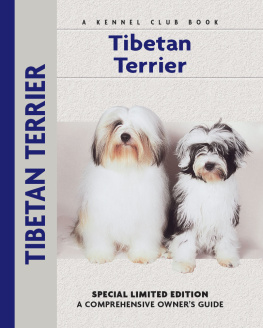Physical Characteristics of the Samoyed
(from the American Kennel Club breed standard)
Skull: Wedge-shaped, broad, slightly crowned.
Eyes: Dark for preference; should be placed well apart and deep-set.
Stop: Not too abrupt, nevertheless well defined.

Ears: Strong and thick, erect, triangular and slightly rounded at the tips.
Neck: Strong, well muscled, carried proudly erect.
Muzzle: Of medium length and medium widthshould taper toward the nose and be in proportion to the size of the dog and the width of skull. The muzzle must have depth.
Nose: Black for preference.
Lips: Black for preference and slightly curved up at the corners of the mouth, giving the Samoyed smile.
Jaws and Teeth: Strong, well-set teeth, snugly overlapping with scissors bite.
Chest: Deep, with ribs well sprung out from the spine and flattened at the sides to allow proper movement of the shoulders and freedom for the front legs.
Front End: Legs should be parallel and straight to the pasterns. The pasterns should be strong, sturdy and straight, but flexible. Because of depth of chest, legs should be moderately long. Shoulders should be long and sloping.
Loin and Back: Loins strong and slightly arched. The back should be straight to the loin, medium in length, very muscular.
Tail: Moderately long.
Rear End: Upper thighs should be well developed. Stifles well bentapproximately 45 degrees to the ground. Hocks should be well developed, sharply defined and set at approximately 30 percent of hip height.
Coat: Body should be well covered with an undercoat of soft, short, thick, close wool with longer and harsh hair growing through it to form the outer coat, which stands straight out from the body and should be free from curl.
Height: Males21 to 23.5 inches; females19 to 21 inches at the withers.
Color: Pure white, white and biscuit, cream or all biscuit.
Feet: Large, long, flattisha hare-foottoes arched; pads thick and tough, with protective growth of hair between the toes.

Contents

From the tundras of northern Europe, the Samoyed was originally intended as a hunter, herder, guard and companion. Follow the introduction of one of the oldest and most people-friendly breeds into the Western world and learn about the people who were instrumental in the Samoyeds development.
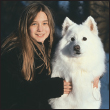
The Samoyeds cherubic face says it allwell, almost all. Beneath the smile and the lush white coat lies a dog with intelligence, hardiness and a bit of mischief. Learn about temperament, the unique responsibilities of caring for a heavily coated breed and breed-specific health concerns.
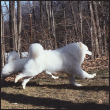
Learn the requirements of a well-bred Samoyed by studying the description of the breed set forth in the American Kennel Club standard. Both show dogs and pets must possess key characteristics as outlined in the breed standard.
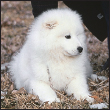
Find out about how to locate a well-bred Samoyed puppy. Discover which questions to ask the breeder and what to expect when visiting the litter. Prepare for your puppy-accessory shopping spree. Also discussed are home safety, the first trip to the vet, socialization and solving basic puppy problems.
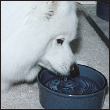
Cover the specifics of taking care of your Samoyed every day: feeding for the puppy, adult and senior dog; grooming, including coat care, ears, eyes, nails and bathing; and exercise needs for your dog. Also discussed are the dog ID, safe travel and boarding.

Begin with the basics of training the puppy and adult dog. Learn the principles of house-training the Samoyed, including the use of crates and basic scent instincts. Enter Puppy Kindergarten and introduce the pup to his collar and leash, and progress to the basic commands. Find out about obedience classes and other activities.
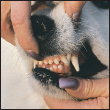
By Lowell Ackerman DVM, DACVD
Become your dogs healthcare advocate and a well-educated canine keeper. Select a skilled and able veterinarian. Discuss pet insurance, vaccinations and infectious diseases, the neuter/spay decision and a sensible, effective plan for parasite control, including fleas, ticks and worms.
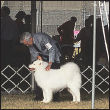
Step into the center ring and find out about the world of showing pure-bred dogs. Heres how to get started in AKC shows, how they are organized, whats required for your dog to become a champion and the basics of ring procedure.
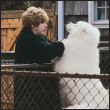
Analyze the canine mind to understand what makes your Samoyed tick. Among the issues discussed are the following potential problems: aggression, separation anxiety, chewing, barking and sex-related problems.
K ENNEL C LUB B OOKS S AMOYED
ISBN 13: 978-1-59378-259-7
eISBN 13: 978-1-59378-985-5
Copyright 2004 Kennel Club Books An Imprint of I-5 Press A Division of I-5 Publishing, LLC
3 Burroughs, Irvine, CA 92618 USA
Cover Design Patented: US 6,435,559 B2 Printed in South Korea
All rights reserved. No part of this book may be reproduced in any form, by photostat, scanner, microfilm, xerography or any other means, or incorporated into any information retrieval system, electronic or mechanical, without the written permission of the copyright owner.
1 0 9 8 7 6 5 4 3 2 1
Photography by:
Paulette Braun, T.J. Calhoun, Alan and Sandy Carey, Isabelle Franais, Carol Ann Johnson, Bill Jonas, Antonio Philippe, Alice Roche and Alice van Kempen.
Illustrations by Rene Low and Patricia Peters.
The publisher wishes to thank all of the owners whose dogs are illustrated in this book, including A-la Kasan Samoyeds, Eleanor Berghold, Raymond Carpentieri, Nadine Cortese, Louisa-Elisa E. Frein, Frank Harned, Janice Hovelman, Cecile Mourgues, Dianne E. Sorrentino, Louis and Frances Thompson and Don and Donna Thornton.













